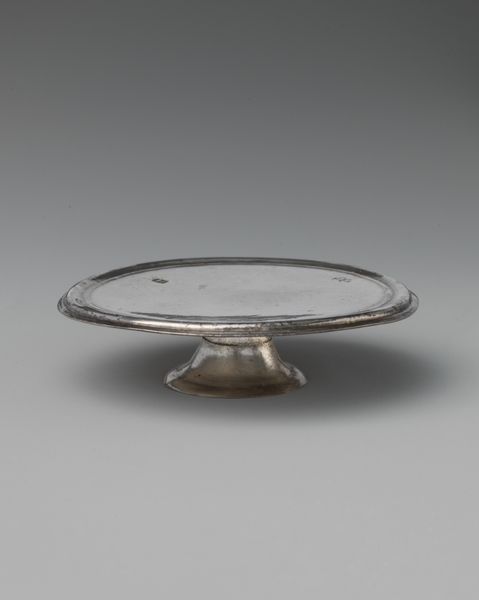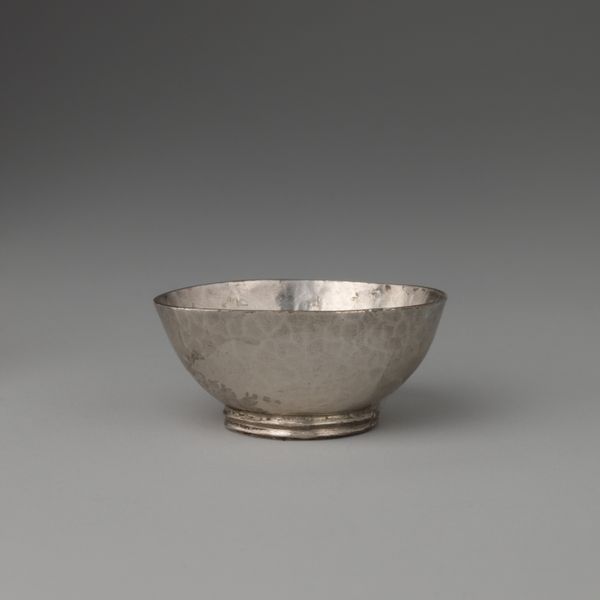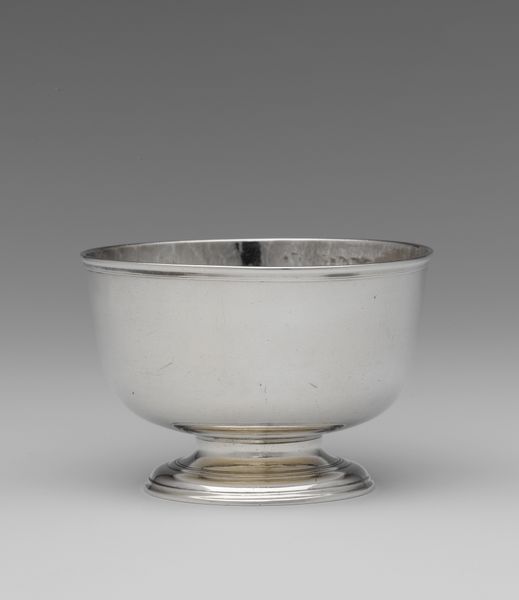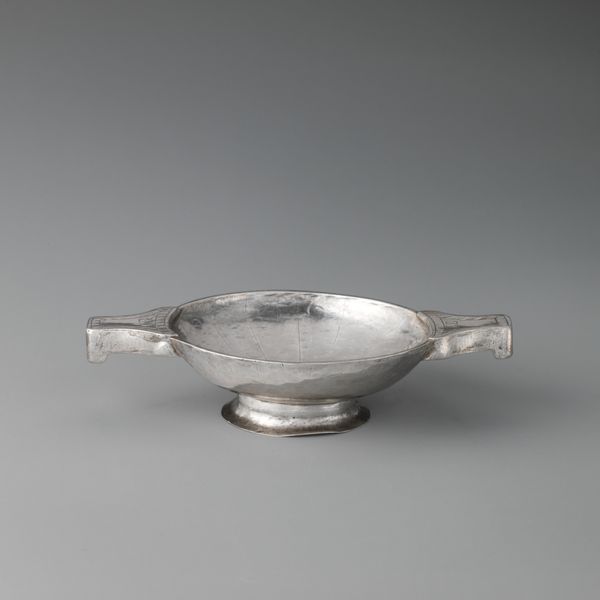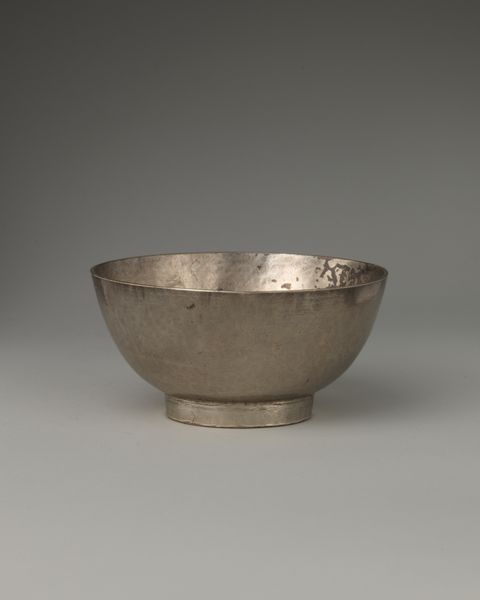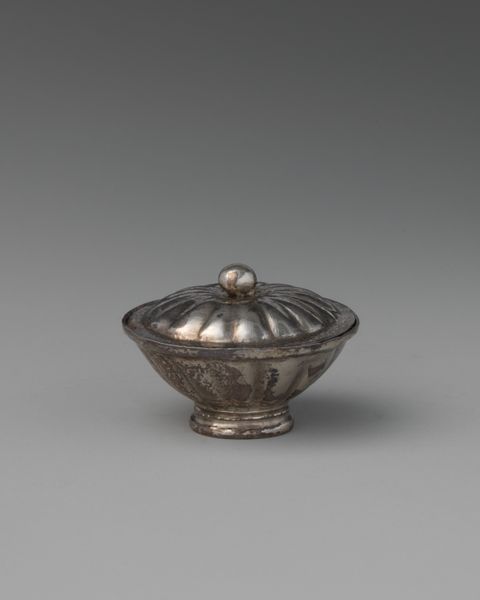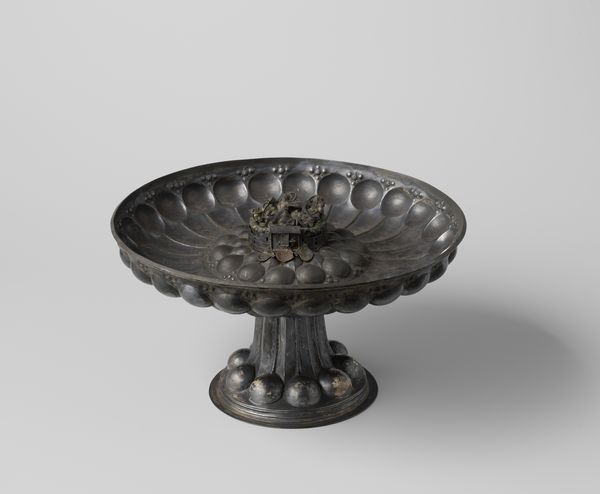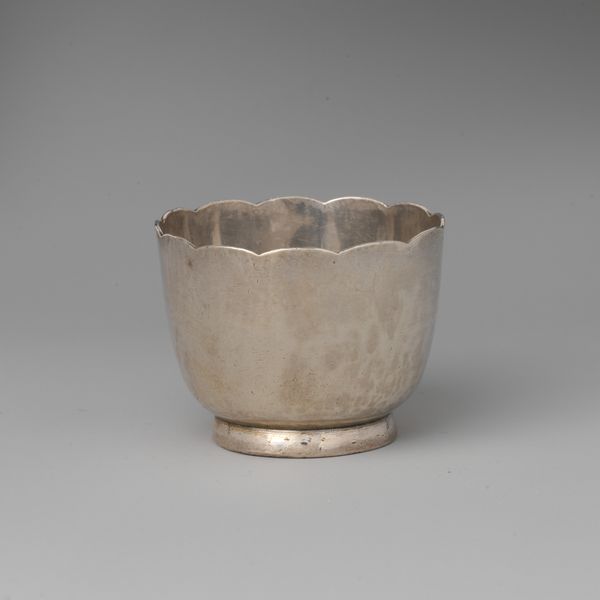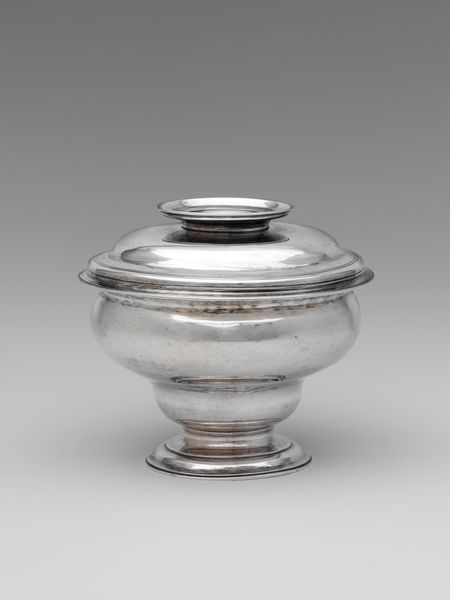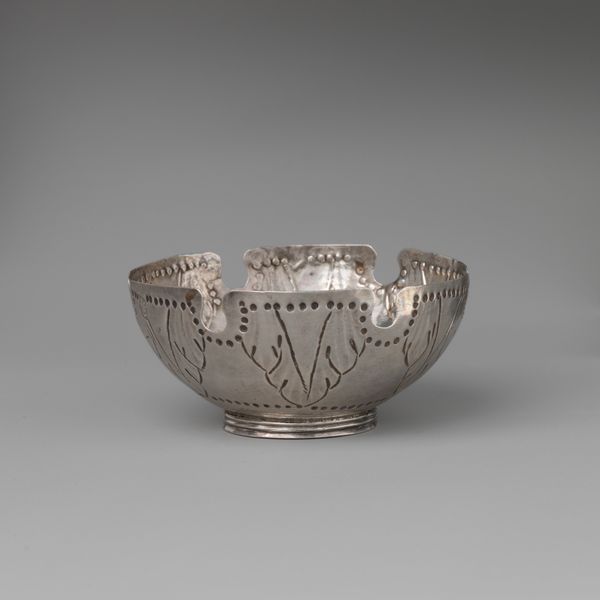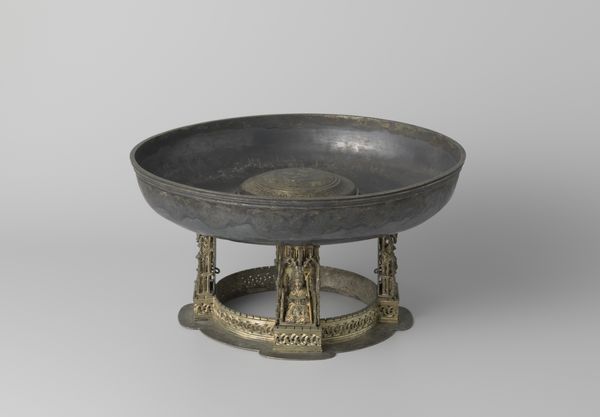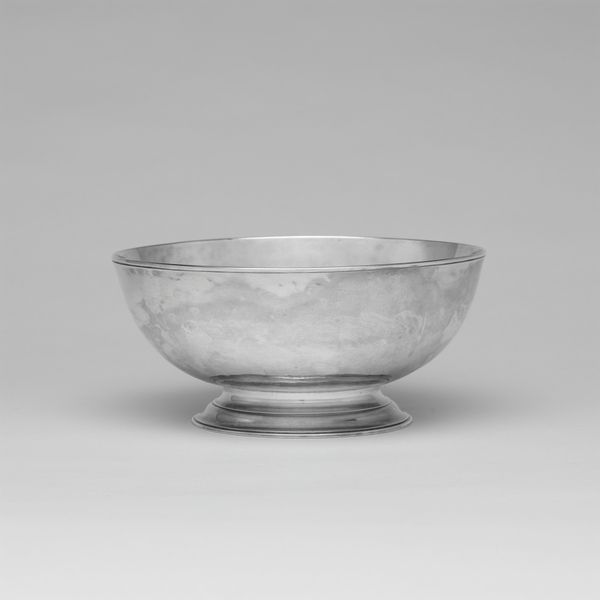
silver, metal, sculpture
#
silver
#
baroque
#
metal
#
sculpture
#
decorative-art
Dimensions: 5/8 × 1 1/2 in. (1.6 × 3.8 cm)
Copyright: Public Domain
Editor: This silver Miniature Stand, dating from 1691 to 1692, really catches my eye. It's so small and delicate. I wonder, what story does a piece like this tell us? Curator: This stand is deceptive in its simplicity. While visually understated, it whispers volumes about class and power dynamics during the Baroque period. Metalwork, particularly silver, was an explicit declaration of wealth and status. Who do you imagine would commission such a piece? Editor: Probably someone very wealthy, using it as a symbol of prestige. But it's so small; was it actually functional? Curator: Perhaps functional in a very specific, ritualized way, or perhaps more about display. Silverware, even miniature pieces, often functioned as a form of conspicuous consumption. Think about the Dutch still life paintings of the era – those meticulously arranged tables laden with goods served to communicate very clear social messages. Editor: So, owning something like this wasn't just about having a pretty object; it was making a statement? Curator: Precisely. Consider the politics of display. Who had access to silver? Who controlled the means of production? This stand becomes a tiny emblem of a larger socio-economic system where access to resources defined identities. How might its symbolism shift if this were made of wood, or clay? Editor: If it were made of simpler materials, it would signify a completely different social standing. This conversation has definitely shifted my perspective! Curator: And for me, your observations highlight the need to always question our initial assumptions and to dig beneath the surface of seemingly simple objects.
Comments
No comments
Be the first to comment and join the conversation on the ultimate creative platform.
